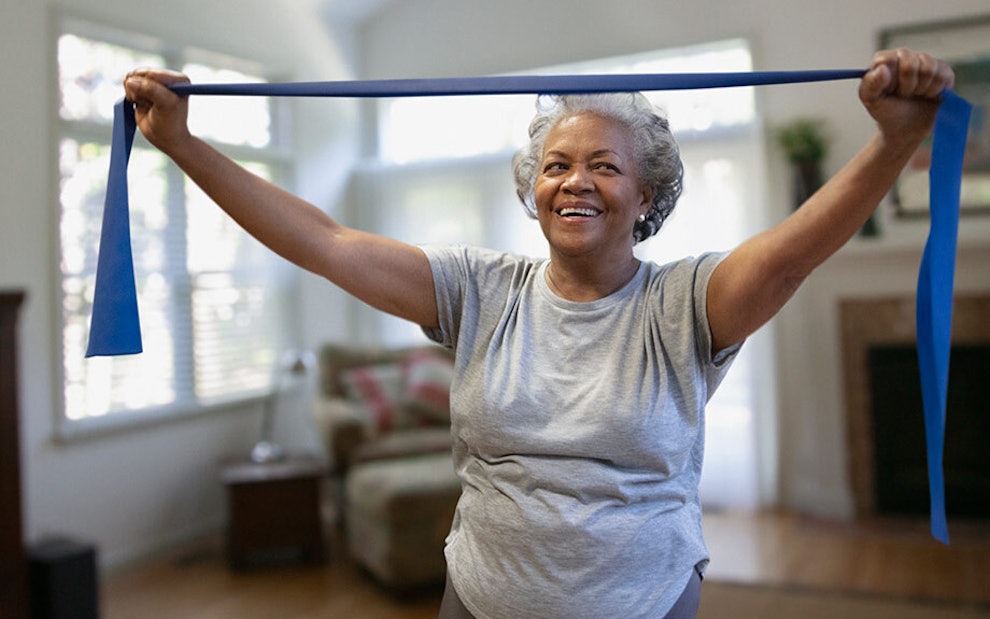Importance of Physical Activity: Benefits, Advice, and More
Article at a glance
Everyone is built differently. However, there are baseline standards when it comes to how much exercise we should all be getting.
There’s a wide range of health benefits that stem from having a consistent exercise routine — mental health stability, disease prevention, improved sleep, etc.

Getting into an exercise routine and improving physical fitness can do more than just help you lose weight. In fact, physical activity is so important, it can help regulate your mental health, sex life, sleep schedule, and more. Staying active is known to improve your quality of life and reduce your risk of developing a variety of health problems.
If you are looking to incorporate more exercise into your lifestyle but are unsure where to begin, don’t hesitate to speak with your provider to find a plan that fits you. Not to mention, browse the benefits of regular physical activity listed throughout this article to help guide your own research.

How Much Physical Activity Should You Be Getting?
While all bodies are different, it is recommended that patients participate in both aerobic exercise and muscle-strengthening activities each week. At a minimum, one should do moderate-intensity physical activity for a total of 150 minutes each week or vigorous-intensity physical activity for 75 minutes each week.
In addition to cardio fitness, a patient should incorporate muscle-strengthening activities twice or more each week. Prior to engaging in a moderate to vigorous exercise program, it’s important to consult with your physician to ensure the plan is safe for you and will improve your health instead of hurting it.

Types Of Physical Activities
There are a number of types of physical activities that you can engage in to improve your health and wellness.
Aerobic Exercise
Aerobic exercise is also referred to as “cardio” and includes anything that boosts one’s heart rate, making you breathe harder and break a sweat. Aerobic activities include a wide variety of exercises, including some household chores you may already be incorporating into your routine. The Center for Disease Control and Prevention (CDC) notes that one way to tell the ‘intensity level’ of the exercise is by whether or not you can talk while doing it. If you can talk during the exercise, it’s considered a moderate-intensity activity. However, if you find it difficult to speak while exercising, it’s considered to be a vigorous-intensity activity.
Common aerobic activities include but are not limited to:
Walking
Running
Biking
Mowing the lawn
Swimming
Playing various sports e.g. tennis, basketball, baseball, etc.
Raking leaves
Hiking
Yoga
Strength Training
Exercises that strengthen muscles should be incorporated two or more times a week. These activities should exercise all major muscle groups i.e. the legs, hips, back, chest, abdomen, shoulders, and arms.
Common muscle-strengthening activities include but are not limited to:
Lifting weights
Bodyweight exercises e.g. push-ups, crunches, arm circles, etc.
Yard work e.g. shoveling, digging, etc.
Yoga
Health Benefits of Physical Activity

Consistent exercise helps to regulate your body and keep you healthy in a variety of ways, some of which you may not even realize.
Stabilizes Mental Health
Exercise is known to boost one’s endorphins, thus lifting one’s mood and lessening levels of anxiety and depression. Furthermore, consistent exercise is known to aid chronic depression as it helps to increase serotonin levels over time, which is the chemical that helps your brain regulate mood, sleep, and appetite. Participating in regular physical activity plays a positive role in keeping one’s headspace clear and focused while increasing positivity and overall mood.
Increases Strength in Bones and Muscles
As we age, bone density dwindles, and the risk of falling increases alongside the risk for arthritis. However, if a patient chooses to participate in regular physical activity, they’re less likely to face these issues. The CDC reports that those who are active, lose bone density slower and are not as likely to have a hip fracture. Not to mention, doing some form of daily aerobic exercise allows one to keep their joints active while building muscle that helps with balance, helping to prevent falls and arthritic issues.
Improves Sleep
Regular exercise is known to help many have a more consistent sleep schedule. Being active each day can assist you in falling asleep quicker, getting a night of more restful sleep, and stepping into a more stable sleep routine. However, it’s important to avoid doing any physical activity an hour before bedtime as it can make you too energized and impede your night’s rest.
Increases Life Longevity
The CDC reports that physically active people have an increased lifespan overall, stating that, “People who are physically active for about 150 minutes a week have a 33% lower risk of all-cause mortality than those who are physically inactive.” When considering all of the health benefits combined, it’s easy to understand why physically active people are known to live longer.
Decreases Risk of Disease
Consistent physical activity is valuable when it comes to preventive health measures. Exercising regularly helps to prevent many medical problems and diseases including but not limited to:
Cardiovascular Disease
Stroke
Type 2 Diabetes
Various Cancers
Arthritis
Metabolic Syndrome
Mental Health Conditions e.g. Depression, Anxiety, Etc.
The CDC notes that heart disease and stroke are two of the leading causes of death in the United States, demonstrating that it’s a huge problem. However, when patients are active daily, their high-density lipoprotein (HDL) cholesterol is boosted, thus decreasing unhealthy triglycerides. HDL, also known as ‘good cholesterol, is protective against heart disease and stroke.
Two other major diseases that physical activity helps to prevent are type 2 diabetes and metabolic syndrome. Metabolic syndrome is considered a cluster of conditions i.e. high blood pressure, high blood sugar, increased body fat around the waist, and abnormal cholesterol, which collectively put a patient at risk of developing type 2 diabetes and heart disease. Oftentimes, the largest cause of type 2 diabetes and metabolic syndrome is living a lifestyle with limited physical activity and an unsound diet.
Physical activity promotes better blood flow, stabilizes blood pressure levels, helps maintain a healthy weight, and healthy cholesterol; all contributing to preventing diseases like type 2 diabetes and metabolic syndrome. Working with a provider to uncover a diet and exercise plan that suits your life is vital in keeping your body fit and your mind at ease.
According to the CDC, being physically active is also known to lessen one’s risk of developing bladder, breast, colon, endometrium, esophagus, kidney, lung, and stomach cancers.
Boosts Self-Confidence and Self-Esteem
One of the main benefits of a regular exercise routine is that one’s physique and weight are maintained. Although weight loss is not always immediate, feeling stronger physically and mentally amplifies confidence levels, thus increasing energy and improving one’s sex life. Not to mention, alongside self-confidence boosts, women are able to become more aroused if they are physically active and men are less likely to struggle with erectile dysfunction.
Swinging into an active lifestyle can make you feel like the best version of yourself; pushing you to meet new people, learn how to love yourself more, and enhance your romantic relationships.
General Health Tips
Beyond physical activity, there are other components to leading a healthy lifestyle as well including diet, hydration levels, stress reduction, and socializing regularly.
Focus on healthy eating
A healthy diet full of vegetables and fruits ensures that you will be hitting your daily needs for vitamins and minerals. The CDC recommends that adults consume 1.5 to two cups of fruit and two to three cups of vegetables every day.
Stay hydrated
Drinking enough fluids is important, especially when engaging in regular physical activity. Drinking water is also associated with a number of other amazing health benefits including blood pressure regulation, weight loss, and better digestion.
Reduce stress
Reducing stress is vital for well-being and overall health as high stress is linked to poor health. Doing your best to manage your stress levels through exercise, meditation, or therapy can be helpful.
Socialize often
Older adults are particularly affected by loneliness which is associated with adverse health outcomes. Making an effort to stay social is imperative for well-being.

Sources
https://www.cdc.gov/physicalactivity/basics/adults/index.htm
https://www.betterhealth.vic.gov.au/health/HealthyLiving/exercise-and-mood
https://www.betterhealth.vic.gov.au/health/HealthyLiving/physical-activity-its-important
https://www.cdc.gov/physicalactivity/basics/pa-health/index.htm
https://www.mayoclinic.org/healthy-lifestyle/fitness/in-depth/exercise/art-20048389
https://www.takingcharge.csh.umn.edu/why-physical-activity-important
https://www.mayoclinic.org/diseases-conditions/metabolic-syndrome/symptoms-causes/syc-20351916
https://www.health.harvard.edu/staying-healthy/how-much-water-should-you-drink
Become a patient
Experience the Oak Street Health difference, and see what it’s like to be treated by a care team who are experts at caring for older adults.




